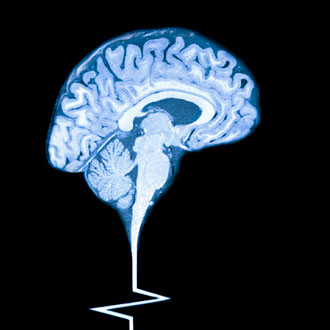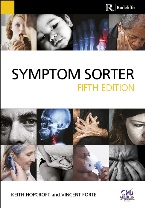Symptom sorter – abnormal movements

The GP overview
This is an infrequent cause for attendance – although the public is becoming increasingly aware of conditions such as restless legs syndrome (RLS) and Tourette’s, and their treatments. Obvious generalised seizures and tremor are not considered in this chapter but are covered elsewhere.
Differential diagnosis
Common
- RLS.
- Myokymia (affecting orbicularis oculi muscles).
- Drug induced – including choreoathetosis, dystonias, tardive dyskinesias and akathisia (drugs include L-dopa, tricyclic antidepressants, metoclopramide and antipsychotics).
- Tourette’s.
- Simple partial seizures.
Occasional
- Anxiety/nervous tic (common, but rarely presented to the GP).
- Muscle fasciculation (for example, benign fasciculation, motor neurone disease).
- Simple childhood tics (common, but infrequently presented).
- Dystonias (for example, writer’s cramp, blepharospasm, spasmodic torticollis).
- Period leg movements during sleep.
Rare
- Myoclonus.
- Chorea (Sydenham’s, Huntington’s).
- Wilson’s disease.
- Hemiballismus (e.g. post stroke).
- Hysterical.
Ready reckoner
| RLS | Myokymia | Drug induced | Tourette’s | Simple partial seizures | |
| Worse at rest | Yes | Possible | No | No | No |
| Patient on medication | Possible | Possible | Yes | Possible | Possible |
| Whole limb affected | Yes | No | Possible | Possible | Possible |
| Other neurological signs | No | No | No | No | Possible |
| Childhood onset | No | No | Possible | Yes | Possible |
Possible investigations
Likely
FBC, U&E, ferritin, B12, folate, TFT, fasting glucose or HbA1c, calcium.
Possible
CT/MRI of brain or spinal cord, EEG, EMG, nerve conduction studies.
Small print
Other specialised tests (e.g. for myoclonus and Huntington’s).
FBC, ferritin – to assess for iron deficiency in RLS.
U&E – renal failure is a potential cause of RLS and can be implicated in partial seizures.
B12, folate – deficiencies may cause or mimic RLS.
TFT – hypothyroidism may cause RLS.
Fasting glucose or HbA1c – diabetes may cause RLS or partial seizures.
Calcium – hypocalcaemia may be implicated in seizures.
CT/MRI of brain or spinal cord – may be required in investigation of fasciculation and seizures (usually arranged after specialist referral).
EEG – for investigation of seizures.
Other specialised tests – usually arranged by neurologist to explore the more obscure diagnoses such as Huntington’s chorea and Wilson’s disease.
Top tips
- When faced with odd and otherwise inexplicable movements of recent onset in a patient, remember to take a drug history.
- Bear in mind that abnormal movements can be caused by a drug that the patient has been taking for some time (for example, tardive dyskinesias).
- Patients with myokymia sometimes become disproportionately anxious about the symptom, imagining all sorts of possible neurological catastrophes – they may need a lot of reassurance.
Red flags
- Childhood tics tend to be single. The patient with the much more significant Tourette’s will probably have multiple tics.
- Drug-induced dystonias may cause odd posturing and require prompt treatment. The diagnosis is easily overlooked – antipsychotics are common culprits, so it is easy to erroneously attribute the dystonia to psychiatric pathology.
- Beware of the combination of personality changes and odd movements such as facial grimaces – this could be Huntington’s chorea. Also, don’t be misled by the lack of a positive family history – this background may have been concealed from the patient.
Dr Keith Hopcroft is a GP in Laindon, Essex.
Dr Vincent Forte is a GP in Gorleston, Norfolk.
The fifth edition of Symptom Sorter is available from Radcliffe Publishing for £34.99.

Pulse October survey
Take our July 2025 survey to potentially win £1.000 worth of tokens

Visit Pulse Reference for details on 140 symptoms, including easily searchable symptoms and categories, offering you a free platform to check symptoms and receive potential diagnoses during consultations.










